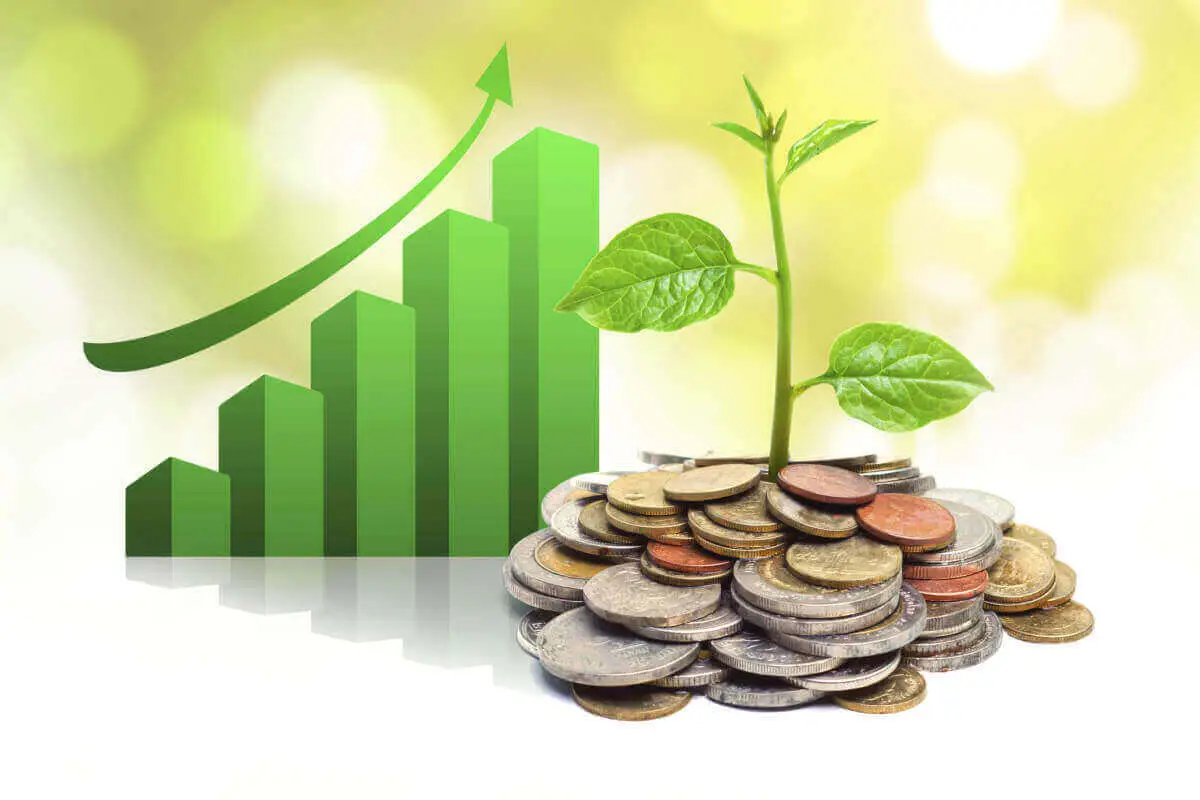The economic situation will be extremely unstable until the end of 2024: inflation is rising and prices for basic goods and services are increasing monthly. According to Rosstat, inflation in October was 9.2%, which is why many people decided to keep or increase their savings.
Many people are wondering where to invest their money to generate passive income. This is not only a way to “escape” inflation, but also an opportunity to turn the money they earn into profitable working capital. Let’s see which investment options are most relevant at the end of 2024.

Three investment options to generate passive income by the end of 2024
In today’s economy, there are many ways to earn passive income. Let’s look at three of the most effective and relevant options that are suitable for investors with different levels of experience and capital.
1. Investments in securities: long-term stability
 Securities are still one of the most popular ways to generate stable passive income. First of all, it’s about stocks and bonds. With stocks of large, reliable companies like Apple, Tesla and Gazprom, you can share in their success.
Securities are still one of the most popular ways to generate stable passive income. First of all, it’s about stocks and bonds. With stocks of large, reliable companies like Apple, Tesla and Gazprom, you can share in their success.
The stocks of these companies have shown steady growth for decades and the end of 2024 is no exception. For example, Apple shares have risen by 8% since the beginning of the year, confirming their resilience. Many investors are looking for ways to invest their money for passive income and choose securities because they allow them to make a profit through dividends without having to sell. The dividend yield of companies like Coca-Cola is around 3-4% per year, which is significantly higher than the interest on deposits.
Another instrument is bonds, especially government bonds. They offer a return of around 7% per year and have a high degree of reliability. For those who want to minimize their risk, bonds can be a good option. The best long-term investments are securities with stable growth and low risk. For example, Russian OFZs currently offer an annual yield of 8.1%, making them attractive to conservative investors.
2. Cryptocurrencies: Risky but Promising Investments
Cryptocurrencies will remain hugely popular in late 2024. Where can you invest your money to earn passive income if you are willing to take the risk? The answer is cryptocurrencies. Bitcoin has increased in value by more than a thousand times over the past decade. In October 2024, Bitcoin will reach a value of $35,000, indicating a recovery from the crises of recent years. Investing in Ethereum or Binance Coin can yield a nice profit if you know when to buy and sell.
Another interesting option for passive income is staking: the process of ‘freezing’ cryptocurrencies for a certain period of time to support the blockchain network, for which rewards are paid. The annual return can reach 10-15%, which is significantly higher than traditional investment methods. However, volatility remains a major risk factor: for example, the price of Ethereum has fluctuated between $1,500 and $1,800 over the past three months.
3. Real Estate: Passive Income with Minimal Investment
Real estate remains one of the most sustainable forms of investment. There will always be a need for living space, so the demand for rental apartments will remain high. Where can you invest in real estate to earn passive income? Commercial real estate in major cities such as Moscow and St. Petersburg continues to show high profitability. Commercial rental income in Moscow is expected to reach 8-12% per year by November 2024. This makes these areas attractive to investors.
Residential properties can also provide stable returns, especially in areas with growing demand. For example, if you rent in an area where business centers or educational institutions are actively being built, you can earn a higher income than in residential areas of the city. By using leverage (a mortgage loan), it is possible to earn passive income with minimal investment. By renting out your apartment, you can cover your mortgage payments and generate additional income.
How Investment Diversification Helps Build a Financial Safety Net
Investment diversification is the key to financial stability and security. Don’t put all your eggs in one basket, as the old saying goes. By allocating money intelligently across different assets, such as stocks, real estate, and cryptocurrencies, you can limit risk and protect your capital. For example, if stock markets temporarily decline, real estate rental income can offset those losses. Or conversely, if cryptocurrency shows tremendous growth, you can make significant profits even if rental income temporarily declines.
Where can you invest money to earn passive income and build a financial safety net? The answer is diversification. With a safety net, you are independent of a single source of income and can look to the future with confidence. By spreading investments across different asset classes, investors are protected from volatility and enjoy a stable income.
Principles of diversification:

- Investing in different asset classes (stocks, cryptocurrencies, real estate).
- Geographic diversification (investing in assets from different countries).
- Combination of risky and conservative investments.
Conclusion
 By the end of 2024, successful investments require thoughtful asset selection and a smart diversification approach. Where to invest your money to generate passive income is a question that many people are concerned about. The answer lies in putting together a balanced investment portfolio. Financial independence starts with conscious decisions. Diversification, such as investments in companies, real estate, cryptocurrencies and securities, will help you achieve this goal.
By the end of 2024, successful investments require thoughtful asset selection and a smart diversification approach. Where to invest your money to generate passive income is a question that many people are concerned about. The answer lies in putting together a balanced investment portfolio. Financial independence starts with conscious decisions. Diversification, such as investments in companies, real estate, cryptocurrencies and securities, will help you achieve this goal.
The most important thing is that you start implementing today. Create your own financial buffer, invest money to be able to work independently and generate a passive income that allows you to enjoy life without being dependent on economic fluctuations. The end of 2024 is a time of opportunities for those who want to seize them wisely.
 en
en  de
de  ar
ar  es
es  nl
nl  hi
hi  fr
fr  it
it  pt
pt  el
el 



